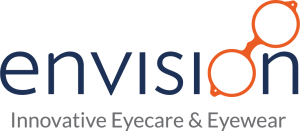Why Are More People Wearing Glasses These Days?
Why Are More People Wearing Glasses These Days?
By Dr. Cameron Steflik, OD
More and more children are needing glasses at younger ages. In the U.S. in the 1970s, a quarter of the population was nearsighted. In the early 2000s, 42 percent of the population was nearsighted. In East and Southeast Asia, where this shift is most dramatic, the proportion of teenagers and young adults with myopia has jumped from roughly a quarter to more than 80 percent in just over half a century. More recent surveys have not been performed in the U.S., but from personal experience and after consulting with other optometrists, it is clear there are more nearsighted kids today than previous generations.
Why is This Happening?
This sudden increase in nearsightedness is baffling since poor vision was originally thought to be impacted primarily by genetics. Genetics is a factor, but there’s more to it. Just look around and you’ll see countless kids absorbed in phones, tablets, and laptops. Who would have thought that looking at something 4 inches from your face for hours at a time could be bad for you? Our ancestors needed excellent distance vision to survive, while most of our daily activities involve looking at screens indoors. Perhaps the motherly admonition to not sit so close to the TV had some merit.
Another theory involves the reduction of time spent outdoors. This theory suggests that natural light exposure aids developmental modulators that form the eyeball. Children today spend far more time indoors than previous generations. Both theories are 2 sides of the same coin. Whichever theory is true, you can draw the same practical conclusion for children’s visual development: less time hunched over a screen, and more time playing outside.
The majority of babies are born farsighted. Our eyes start slightly too short, and they grow in childhood to the right length, then stop. This process has been finely calibrated over millions of years of evolution. But when the environmental signals don’t match what the eye has evolved to expect the eye just keeps growing.
So Why Does This Matter?
So what if more children need to wear glasses? Glasses, contact lenses, and laser surgeries all help people see better, but they do not treat the underlying problem. Patients with severe myopia have elongated eyeballs- they look more like olives than spheres. This stretching of the eye increases risks of developing ocular disease including retinal detachments and glaucoma later in life which can lead to debilitating blindness. Nearsightedness also can lead to a reduced quality of life, affecting daily activities such as driving, sports, and social interactions.
Can We Do Anything?
Once the eye has grown it doesn’t ungrow. Prevention is key. Children need more time outdoors, but unfortunately this likely is not enough due to the increasing demands on near vision. Special contact lenses called multifocal lenses alter the way light enters the eye.This sends the signal for the eye to stop lengthening.
In November 2019, the FDA green-lighted the first-and currently only-treatment specifically designed to slow the progression of myopia, a soft contact lens from CooperVision called MiSight. It has been shown to slow progression up to 50%.
For more information on myopia control- the American Optometric Association’s evidence-based committee published a report advising its members on how to use myopia control.
By adopting a holistic approach that emphasizes education, lifestyle modifications, and the latest lens technology, we can work towards reducing the prevalence of myopia and safeguarding the vision of the next generation. Together, let’s focus on a future with clearer vision and improved eye health.
For more information about mitigating the effects of the myopia epidemic reach out to your eye doctor today! Schedule an appointment with us at Envision Eyecare at (828) 254-6757.



